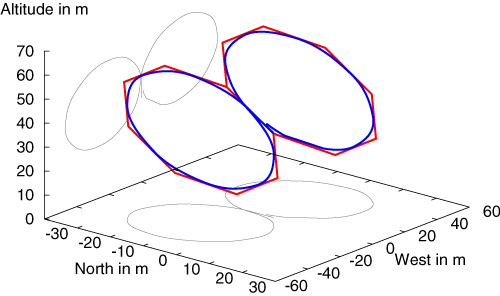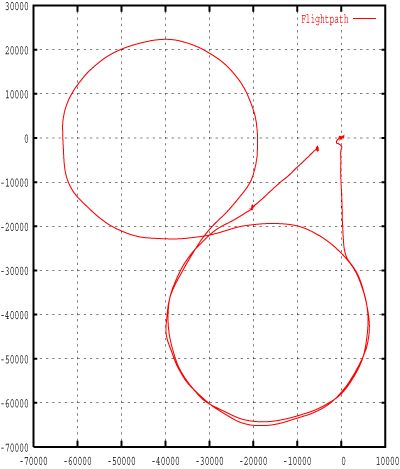Department of Computer Science |
 |
Institute
for Technical Computer Science |
Flight
Flying a path for Marvin is always flying from one three-dimensional waypoint (i-1) to another (i). These (lists of) waypoints are normally sent by an external entity like the Mission Control. Marvin
has two different flight modes. One is straight line and the
other curved.   InsightThe
flight range of the helicopter in its current state is about
300 m due to two issues. Firstly, as long as a human pilot should
be able to recover the helicopter in case of an emergency it
has to be somewhere in the middle of the area because the visual
range is about 150 m. Secondly, DECT and WLAN are officially
limited to 300 m but this is solely a monetary issue which could
be solved easily. Safety is an issue. It may seem a pretty small helicopter but if one looks at the technical data and think about it one will see, that there are rotating blades with 1350 rpm, having a diameter of 1.84 m and weight 0.25 kg each. Therefore, the tip of the blade has a speed of more than 450 km/h and each blade is pulling with a force of about 2800 N outwards. Some flights can be seen in the video section. |